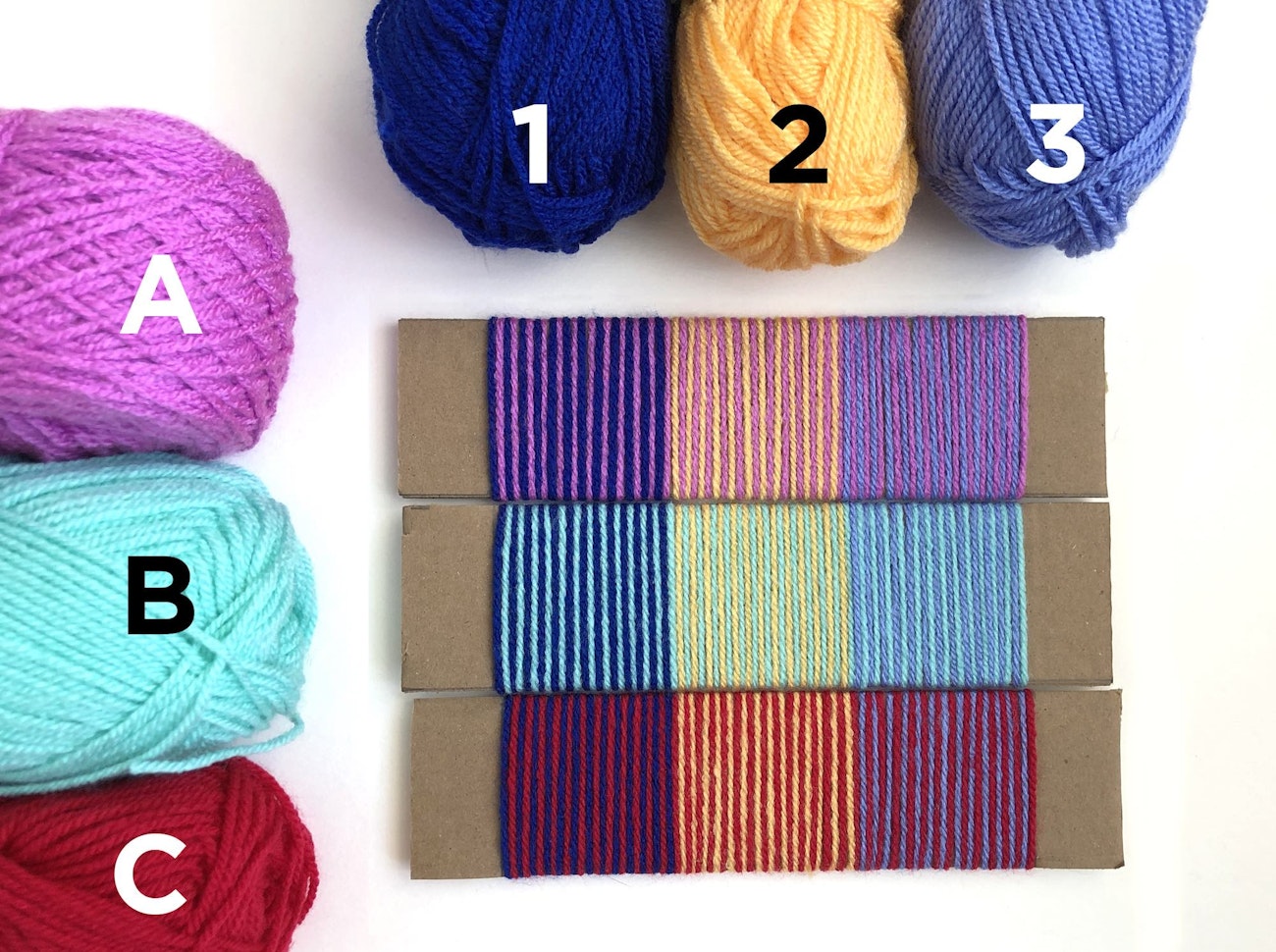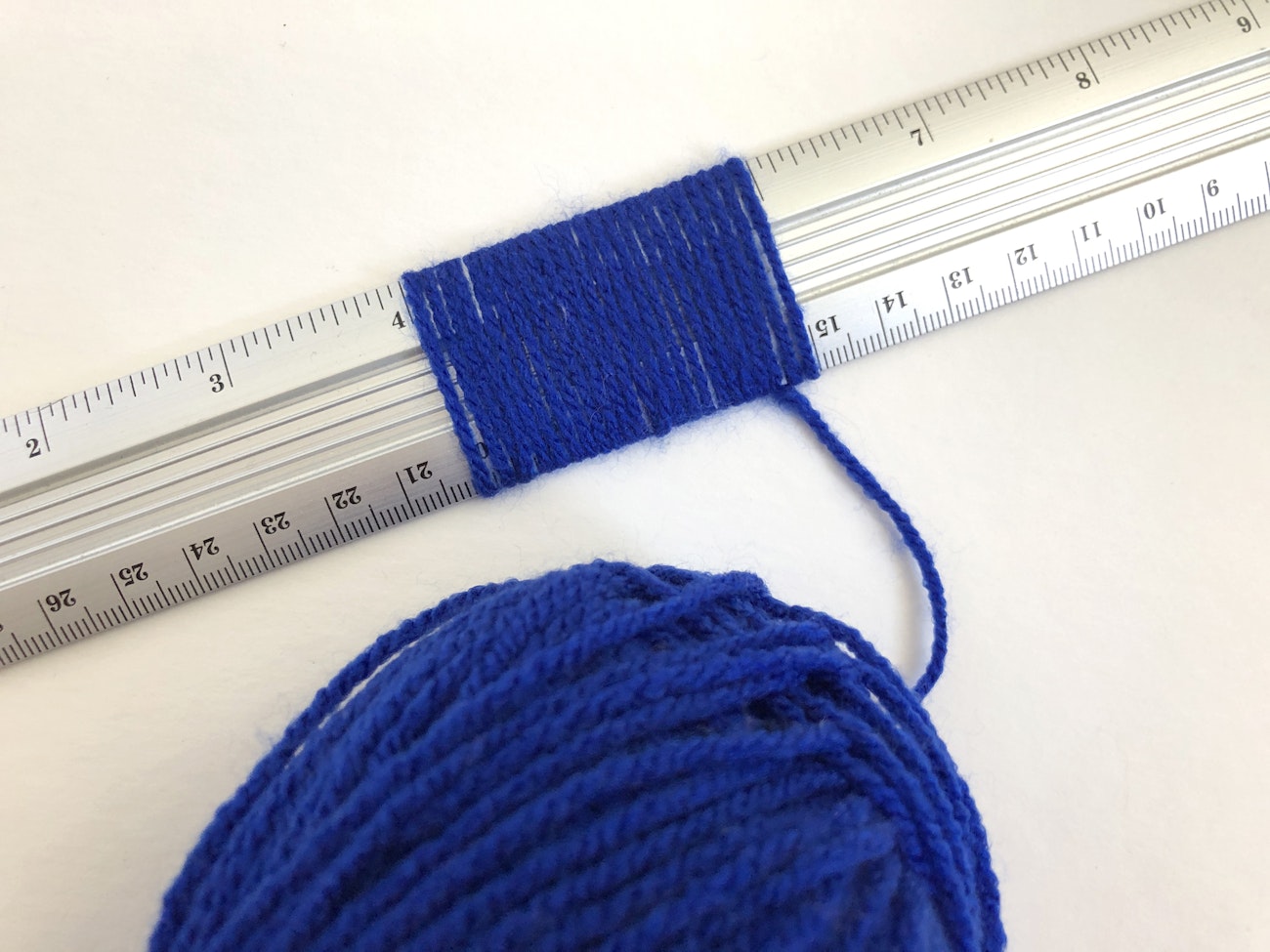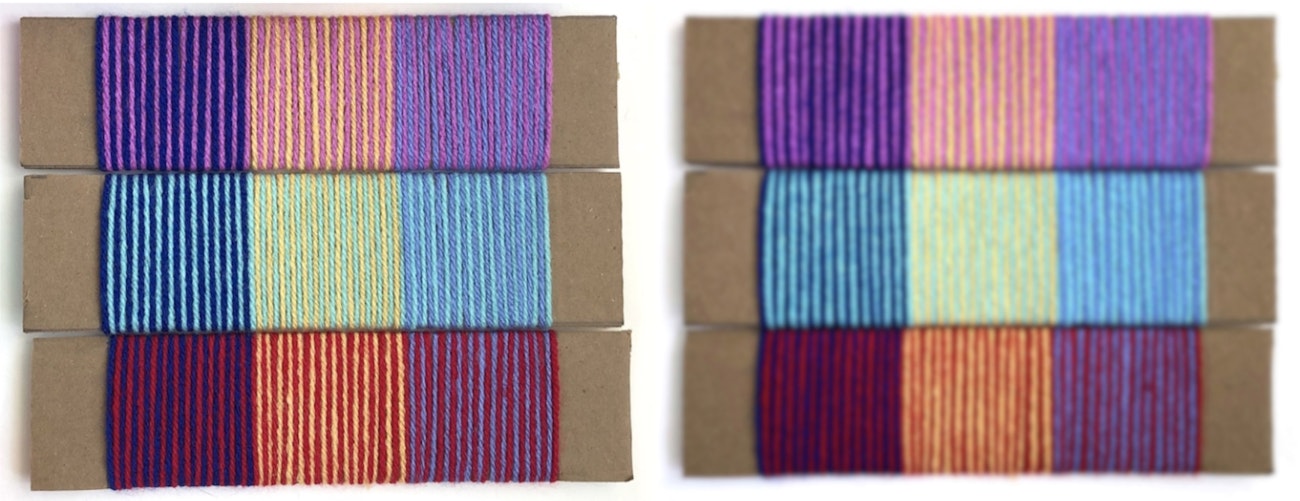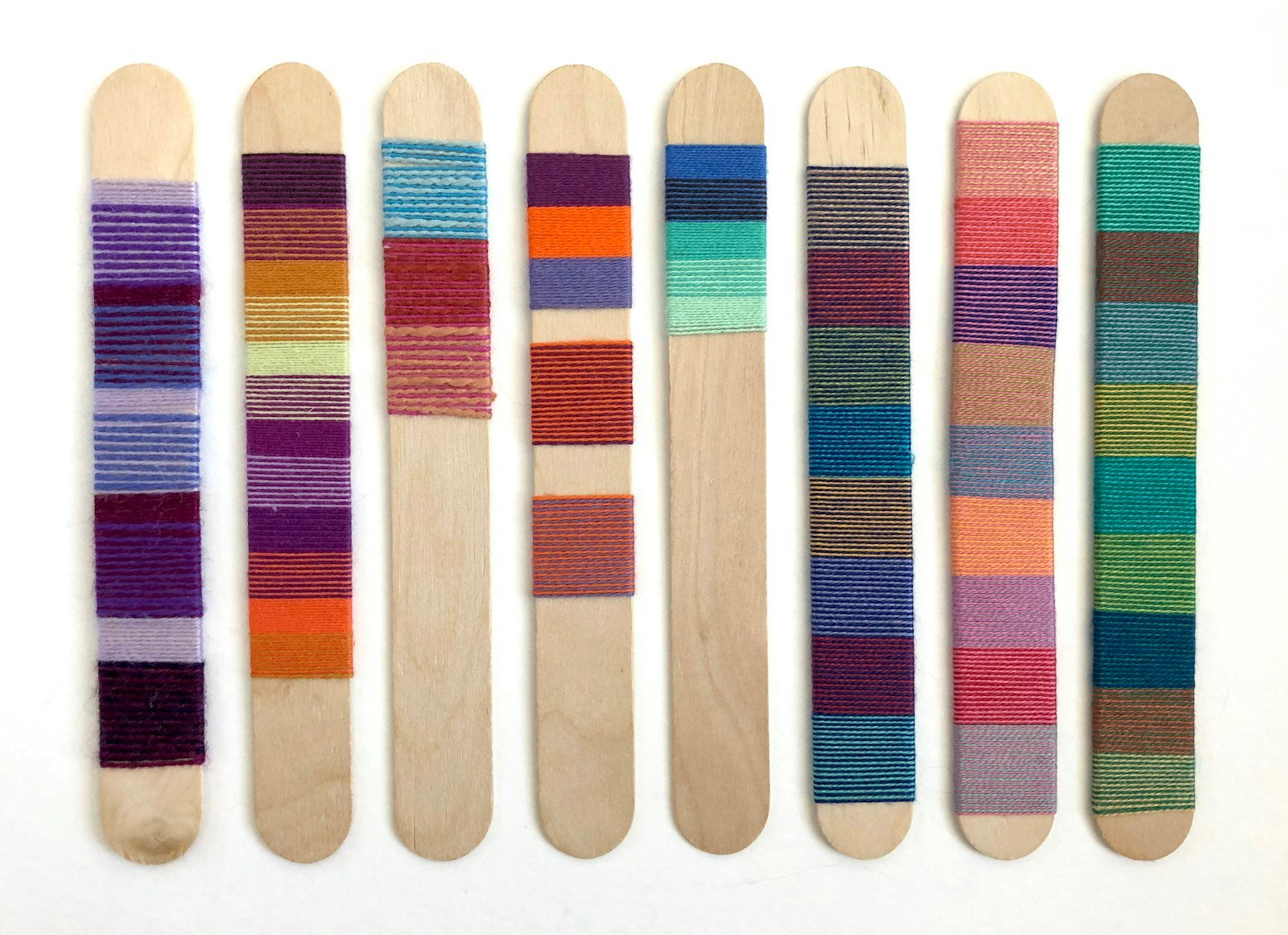While weaving usually brings great joy and satisfaction, the feeling can quickly turn into disappointment when the cloth doesn’t turn out quite right.
Thinking back to my early weaving days, my dissatisfaction with a piece often stemmed from my color choices. Back then, I would choose warp and weft colors that looked great when placed side by side in their ball or cone form. Once woven together, unfortunately, some of the combinations turned out to be underwhelming, muddy, or just downright ugly.
What is it about weaving that can make two perfectly fine colors turn to mud when combined? It’s due to a phenomenon called optical color mixing where the brain combines the tiny dots of visible warp and weft to create a new, perceived color. It can be difficult to guess how colors will mix once they’re woven together, which is why weaving a color gamp is an often-suggested exercise for exploring optical color mixing.
Color Gamps: What Are They and Why Make One?
Color gamps are a bit like a multiplication table, but with colors instead of numbers. Each color is assigned a section of the warp, usually in equal widths. The same color pattern in the warp is then repeated in the weft. The resulting cloth (the multiplication table) is a matrix of all the combinations of warp and weft.
While gamps are an invaluable tool, they have some disadvantages: they take time to weave, it can be costly to purchase multiple yarns, and gamps are static. By “static,” I mean that while a gamp will show you how one warp color interacts with a weft color, it is not possible to rearrange the weft order to try something new. Although I’ve woven many colorful plaids, for these reasons I’ve never woven a gamp; instead, I developed my own method for studying color interactions.
The Weave-Less Gamp
What if you could visualize warp-and-weft combinations quickly—without weaving? I’m happy to say that there is a simple way to do just that—one that saves both time and money while still giving you an accurate sense of how your colored yarns will interact. The idea is to produce optical blending, but instead of creating tiny squares of color, we will create thin stripes of color. When they are viewed from a distance, you will see the optical blending at work.

Just as with a woven gamp, a weave-less gamp creates a grid with different color combinations in each square. Unlike a woven gamp, the rows can be rearranged or unwound and rewound with different color combinations.
Making Your Weave-less Gamp
To make your own weave-less gamp you’ll need the following supplies:
- Scrap cardboard or cardstock. For finer yarns such as 8/2 cotton, jumbo wooden tongue depressors work well in place of cardboard, as seen in the image at top. If you go this route, do not cut the tongue depressors to size as you would in Step 3.
- Ruler and scissors or a self-healing cutting mat and utility knife.
- Adhesive tape.
- Pencil.
- Multiple colors of yarns of the same thickness. For this example, I used DK acrylic yarn.
Step 1: Plan your gamp. Decide the number of warp and weft colors for your gamp. For this example, we’ll use three warp colors and three different weft colors to create a 3 × 3 gamp.
Step 2: Determine the size of your gamp’s squares. Wrap a single strand of yarn around a ruler 24 times using moderate tension. The yarn should be taut, but not stretched out, with each wrap lying snugly beside the previous one. Note the width of the 24 wraps. With my DK acrylic yarn, the measurement was about 2".

When wrapping your yarn for Step 2, don’t pull the yarn too tight or leave it hanging loose. Pull it just enough so it stays straight with minimal stretching.
Step 3: Prepare the cardboard. Calculate the total height and width using the following formulae:
- Height: (Number of weft colors) × (width of 24 wraps)
- Width: (Number of warp colors) × (width of 24 wraps) + 2" border
In this example, the cardboard height is 6" (3 x 2) and the width is 8" (3 x 2 + 2). Leaving a 1" border on both sides of the cardboard, measure and mark the rows and columns. Cut along the horizontal lines using a utility knife and self-healing mat or scissors to separate the cardboard into 3 rows.
Step 4: Assign labels. Designate letters (A, B, C) for the warp colors and numbers (1, 2, 3) for the weft colors.
Step 5: Wrap the yarn. Using the column lines as guides, wrap the yarns two at a time to create each combination. Keep the yarns flat with no twisting and secure the ends with tape. In this example, I wrapped my first card with the following color combinations: A1, A2, and A3. For the second card I used B1, B2, and B3 and for the third I used C1, C2, and C3.
Step 6: View your gamp. Arrange the cards so that A, B, and C appear as vertical columns. View them from a distance or take a photograph and slightly blur it, as seen in the photo below, to see how the colors interact. Change the order of the cards to visualize a gamp with different weft order.

Taking photos of your weave-less gamps and blurring them is one way to see how optimal color mixing affects each color combination. You can save these photos alongside the unblurred versions as references for future projects.
Final Thoughts
If you want to make your own weave-less gamps, but don't have enough yarns of the same width, don’t worry! A set of more than 100 embroidery floss colors can be purchased online for less than $20. Choose a set that contains a wide range of hues (red, orange, yellow etc.), saturations (strength of hue, e.g., lavender vs. royal purple) and values (light vs. dark). Make your weave-less gamps using the embroidery floss, then you can confidently buy yarn in colors that will work well together.
Think of a weave-less gamp as your color playground. Experiment, shuffle, and surprise yourself with unexpected combinations. You might just discover a new favorite color combination!
Jennifer loves using color in creative ways, and you can see how her weave-less gamp technique has resulted in stunning color combinations in several of her projects, including her Sheer Delight Scarf and Walk This Way Bath Mat.

